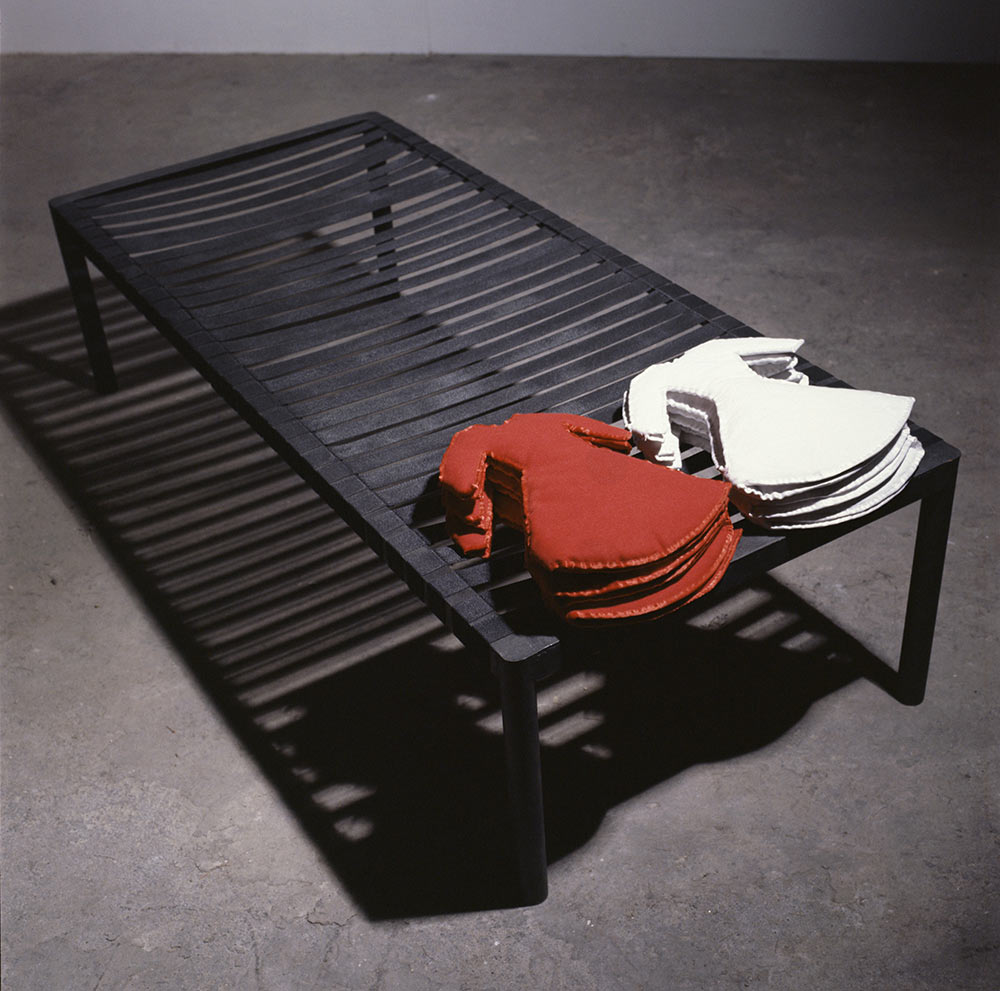British Art Show 4
Richard Cork
Remembrance of childhood fuels the art of Permindar Kaur, but these recollections have the capacity to haunt it as well. Her finest work seems to have been made by a woman who ruminates, time and again, on the insecurities in a child’s mind. The objects she produces often resemble toys and they are notable for their vulnerability. There is nothing playful about them. Rather do they appear ominous, as if gifted with the power to foresee the future. In Untitled, 1995 (cat. 33), a costume made of green fabric dangles from the wall. Its legs terminate in copper boots, while an equally burnished crown beaten from the same material caps the head. But the costume remains empty. Loose folds run down its surface and the owner’s absence seems fateful. Although it could simply be an item in a child’s dressing-up cupboard, this inert form also says something about the ultimate futility of an adult’s lust for aggrandisement.
Exploring Kaur’s work is akin to moving through the rooms of an uncannily deserted house. In Untitled, 1993 (cat. 30), two piles of garments are deposited, with conspicuous neatness, on the end of a bed. Despite their crisp contours and fresh colours, they seem to have been abandoned. The bed itself is stark and shorn of anything that would guarantee comfort. The shadows cast by its straps on the floor beneath reinforce their resemblance to the bars of a cage. This could easily be the rudimentary furniture in a cell, or perhaps the bed associated with a culture radically removed from our own.
Conscious of her Indian and British background, Kaur aims at exposing national barriers along with the contradictions inherent in cultural fragmentation. In Cot, 1994 (cat. 3′), the brilliant red fabric seems inviting at first. But then we begin to wonder why the cot has been filled almost to the point of congestion, and its sides take on a defensive appearance. They seem bent on shutting the rest of the world out, as well as preparing the child who inhabits the cot for a life governed by a siege mentality.
Perhaps the most concise and poignant of all these works is the ironically entitled Innocence, 1993 (cat. 29). Flattened for display purposes, like an exhibit in a costume museum, the little girl’s dress nevertheless retains a certain flamboyance. Still, the iron dagger slung from the front compromises whatever childish appeals it may possess. For the time being, the weapon is dormant in a scabbard. But its prominence ensures ease of access, suggesting that the garment’s owner must be ready at any moment to clasp the dagger and fight for her survival.
Richard Cork. Extract from ‘British Art Show 4’ exhibition catalogue, Hayward National touring exhibitions, London, England. 1995
ISBN-10 : 1853321451
ISBN-13 : 978-1853321450
